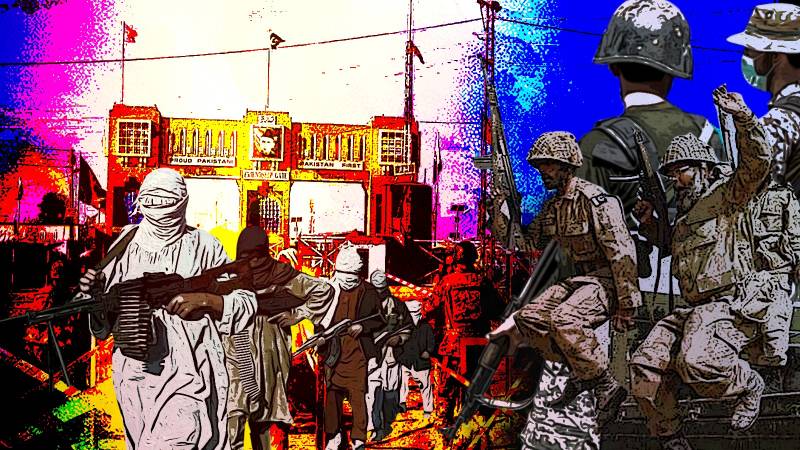Former Lieutenant-General Tariq Khan has recently penned a short piece on counterinsurgency, which needs serious reading and discussion.
- WBOYWBOYWBOYWBOYWBOYWBOYWBOYWBOYWBOYWBOYWBOYWBOYWBOriginal
- 2024-09-08 00:16:12552browse
During the days of the so-called 'War on Terror,' Khan first commanded a division based in Dera Ismail Khan with its area of operations in South

Former Lieutenant-General Tariq Khan has recently penned a short piece on counterinsurgency, which needs serious reading and discussion. A word about Khan before I get to the points he has raised.
During the days of the so-called 'War on Terror,' Khan first commanded a division based in Dera Ismail Khan with its area of operations in South Waziristan and later took over as Inspector-General Frontier Corps. In both command capacities, he arguably garnered the most hands-on experience of any general officer in planning and executing small-, medium- and large-scale operations. His analysis, therefore, is guided by practical experience.
Later, as lieutenant-general he commanded 1 Corps, which is one of the two strike corps of Pakistan Army.
Let me now proceed to the central points of his analysis under four heads: analysing the threat, strategic response, tactical response, and administrative response.
[NB: the summary of Khan's points is in italics; my assessment is in plain text.]
THE THREAT
The militant does not seek space primarily, though his tactics are designed to gradually expand his presence by reducing the state's/government's writ. He does this by seeking and attacking political and military targets. Once he manages to dilute the state's writ, he secures space which he can govern by raising revenue and dispensing justice. This cycle is repeated to enlarge the physical space. The state loses credibility, and the people in those spaces come to rely on the militant because of the state's absence or near-absence. The militant's approach is incremental and he targets government officials, security forces and, in some cases, mounts spectacular attacks to cause civilian casualties. Simultaneously, he attempts to dominate the lines of communication by using improvised explosive devices (IEDs), ambushing security forces' convoys and raiding bases and posts in the area.
This is a good overall assessment of the threat. We experienced it in the erstwhile Provincially and Federally Administered Tribal Areas, many of which were lost to elements of Al Qaeda and an alphabet soup of Pakistani and Central Asian groups.
Every one of the points above can be further broken down for the purposes of strategic and tactical planning. At the core of the militant's strategy is to neutralise the state's asymmetric advantage and create his own. He takes advantage of a number of factors to make this strategy work — poor governance, distances, terrain, underdevelopment, kinship bonds, religious/sectarian or ethnic affinities, porous borders, sanctuaries in foreign but contiguous territories, enabling environment (sympathetic foreign government(s), funding, availability of weapons, covert ingress and egress points etc)
Khan is right in arguing that space is not the primary operational objective. But it is a desired development if the state and the people can be physically and psychologically impacted through a strategy of incremental, event-based violence. In a way it is akin to what in nuclear strategy is referred to as 'salami slicing'.
Another important implication of Khan's argument is the militant's reliance on a reactive strategy by the state/government. The militant acts; the government reacts. Result: events outpace military employments and deployments and the militant retains the initiative.
Corollary: unless the state can wrest the initiative from the militant, it will be forced to react — i.e., defend when an attack comes and wait for the next attack to come. According to Khan, "we have no specific strategy for the phenomenon; nor have we hypothesised the threat."
The problem with a reactive strategy or not hypothesising the threat should be obvious, not least because we have been through that experience at a very high cost. Allowing the militant to ingress incrementally and ultimately capture physical spaces then requires major operations that are necessarily disruptive of sociopolitical and economic life in those areas. A proactive strategy, on the other hand, takes the 'war' to the adversary and, in the initial phases, relies on the scalpel
This is where Khan speaks of the three-tier response.
STRATEGIC RESPONSE
Most importantly, the state policy should be proactive and it must control physical spaces. These spaces should be identified and secured. Law enforcement and local intel must be integrated with the people of the area. Denying space to the militant is very important while hypothesising the threat is crucial for appreciating the militants' orientation. This would help prioritise targets, the protection they need and the response that can be made available. The assessment must also include multiple threat scenarios in order for resources to be judiciously allocated. The execution should be decentralised but the command centralised.
The strategic response, as argued by Khan, is in line with the overall appreciation of the threat. If the militant's primary objective is to undermine the state's writ, and if the first-order effect of that strategy results in physical, psychological and socioeconomic dominance of spaces, then it stands to reason that the militant should be denied spaces. Extrapolating from this, it would be
The above is the detailed content of Former Lieutenant-General Tariq Khan has recently penned a short piece on counterinsurgency, which needs serious reading and discussion.. For more information, please follow other related articles on the PHP Chinese website!

